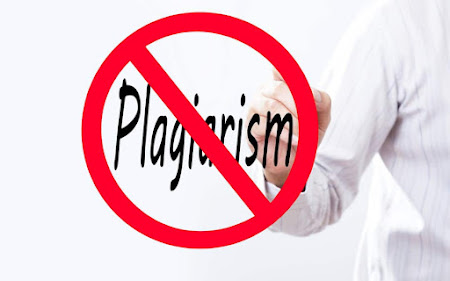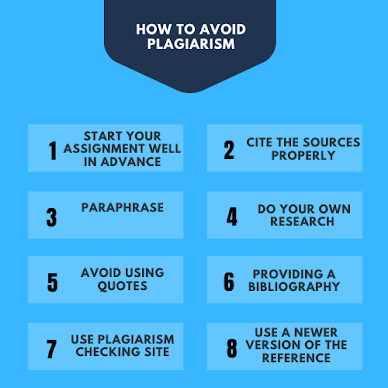UED 102 PORTFOLIO
UED 102 STUDY SKILLS
Assalamualaikum, hello everyone! Welcome to my Blog. In this blog, I want to share to all of you about Study Skills in UED 102. First, let me introduce myself. My name is Muhammad Afiq Iskandar Bin Mohd Abdullah. I am student who currently study at UiTM Pahang, Campus of Jengka which I studying in Diploma in Accountancy (AC110). I am from Pahang and I was born on 8 April 2005 at Kuantan.
The purpose of doing this blog is introduce to all of you about all the UED 102 or specifically teach us about study skills. There was 7 modules that we learnt.
7 CONTENT OF UED :- Getting ready to learn
- Goal Setting
- Time Management
- Getting know about the campus
- Memory learning
- Notes taking strategies
- Academic Intergrity
MODULE 1 : GETTING READY TO LEARN
- Getting ready to learn
- Goal Setting
- Time Management
- Getting know about the campus
- Memory learning
- Notes taking strategies
- Academic Intergrity
LEARNING STYLE 1 : VISUALFor visual style learner they are remember what they read rather than what they hear. It is because they prefer to see information than hear about it. They also prefer to read story rather than listening to it so they can remember the line of the story. Other than that, visual style learner also likely to use the diagrams and charts to understand the information and ideas given. They can imagine the pictures in their mind.
LEARNING STYLE 2 : AUDITORYFor auditory style learner, they talk about what they want to do. They show emotion through the pitch, tone, and volume of their voices. They enjoy to listen but can't wait to get chance to talk. They like hear themselves and others to talk. They are tend to remember names but forget the faces and easily distracted by the sounds. Auditory learners get to learn from the oral instruction, either from the lecturer or themselves. They prefer to recite or hear the information and benefit from auditory repetition.
LEARNING STYLE 3 : KINESTHETICFor kinesthetic style learner, they try the things out, feel and manipulate objects. To understand something, they have to do it in some type of activity. They remember very good when hands on is done, not what they seen or talked about. They prefer for direct involvement in what they are learning for. They can't focus and find it difficult to pay attention to visual or auditory presentations.To do the summary, I am kinesthetic based on my test result above. I agree with the results because I am an even quicker learner when it comes to practical work. Apart from that, I also get into situations where I realize myself as the other two types of learners. I believe each person has their own preferred ways and skills based on their perspectives. From my perspective, a skill can be improved and evolve themselves in interest to ease their duties and responsibilities.
SPECIFIC :Create goals that are clear and well-defined, focusing on what you want to achieve.
MEASURABLE :Set goals that can be tracked and evaluated to determine your progress.
ATTAINABLE :5 STEP APPROACH :
WHAT IS TIME MANAGEMENT ?THE IMPORTANCE OF TIME:
TIMES MANAGEMENT TIPS:
WHAT IS PROCRASTINATION?
TIMES MANAGEMENT TIPS:
MODULE 4 : GETTING KNOW THE CAMPUS
ACADEMIC RESOURCES :
- LIBRARY (AL-BUKHARI LIBRARY)📚
- COMPUTER (MAKMAL IT)💻
- REGISTER (HAL EHWAL AKADEMIK)🕮
HOUSING, DINING AND TRANSPORTATION RESOURCES :
- BUSES 🚌
- DINING PLACES🍲
- E.G : MEDAN SELERA KOLEJ TOK GAJAH, BUS STATION, KOPERASI AND KOLEJ MAT KILAU.
STUDENT ORGANIZATION RESOURCES :
- EXTRA CURRICULAR🏅
- LEISURE ACTIVITY🏈
- E.G: HAL EHWAL PELAJAR, PADANG RUGBY, STADIUM, KEM GADING
WATCH VIDEO BELOW TO SEE MORE SPECIFIC FACILITIES OF UITM JENGKA PAHANG
https://youtu.be/qXj2HrK4sfU
MODULE 5 : MEMORY LEARNING
THIS IS MY ANSWER !
WHAT IS MEMORY ?
MEMORY IS ABLITY OF SOMEONE TO RECALL INFORMATION AND ABLITY TO REMEMBER PAST EXPERIENCES, LEARNED FACTS, SKILLS AND HABITS.
TYPES OF MEMORY :
SENSORY MEMORY: The shortest-term and can make up ability to process and recall what you see.SHORT TERM MEMORY: Have limited storage. The information must be repeated so that can the get information to long-term memory.
LONG TERM MEMORY: Unlimited and have large storage. If the information is being used for a long time, the information will be lose.
MEMORY STRATEGIES :
STRATEGIES FOR IMPROVING OUR MEMORIES:- AVOID LAST MINUTE STUDY.
- DO MORE PRACTICE ON INFORMATION.
- VARY STUDY ROUTINE.
- PAY EXTRA ATTENTION TO DIFFICULT INFORMATION.
MODULE 6 : NOTE TAKING STRATEGIES
WHAT IS NOTE TAKING ?
WRITING DOWN IDEAS FROM LECTURES AND READING IN OUR OWN WORDS.
WHY TAKE NOTES ?
- HELP US TO PAY ATTENTION IN CLASS.
- HELP US TO STUDY FOR TEST.
- HELP US TO IMPROVE OUR MEMORY.
- HELP US TO ENGAGE OUR SENSES.
- HELP US TAKE OWNERSHIP OF IDEAS.
WHY REVIEW NOTES ?
- WE WILL LOSE 80% OF WHAT WE HEAR IF IT IS NOT REVIEWED IN HOURS.
- IDENTIFY ANY QUESTION FOR PEERS, THE NEXT CLASS OR TO ASK THE LECTURER.
- THERE IS NOT ENOUGH TIME TO ABSORB ALL THE INFORMATION THAT WE LEARNED IN THE CLASS.
CORNELL NOTE TAKING METHOD :
WAY TO TAKE BETTER NOTES :
- USE PEN AND PAPER.
- TAKE DETAILED NOTES.
- USE COLOURFUL PEN.
- DO MIND MAPPING NOTE.
ACADEMIC RESOURCES :
- LIBRARY (AL-BUKHARI LIBRARY)📚
- COMPUTER (MAKMAL IT)💻
- REGISTER (HAL EHWAL AKADEMIK)🕮
HOUSING, DINING AND TRANSPORTATION RESOURCES :
- BUSES 🚌
- DINING PLACES🍲
- E.G : MEDAN SELERA KOLEJ TOK GAJAH, BUS STATION, KOPERASI AND KOLEJ MAT KILAU.
STUDENT ORGANIZATION RESOURCES :
- EXTRA CURRICULAR🏅
- LEISURE ACTIVITY🏈
- E.G: HAL EHWAL PELAJAR, PADANG RUGBY, STADIUM, KEM GADING
THIS IS MY ANSWER !
WHAT IS MEMORY ?
MEMORY IS ABLITY OF SOMEONE TO RECALL INFORMATION AND ABLITY TO REMEMBER PAST EXPERIENCES, LEARNED FACTS, SKILLS AND HABITS.
TYPES OF MEMORY :
SHORT TERM MEMORY: Have limited storage. The information must be repeated so that can the get information to long-term memory.
LONG TERM MEMORY: Unlimited and have large storage. If the information is being used for a long time, the information will be lose.
MEMORY STRATEGIES :
- AVOID LAST MINUTE STUDY.
- DO MORE PRACTICE ON INFORMATION.
- VARY STUDY ROUTINE.
- PAY EXTRA ATTENTION TO DIFFICULT INFORMATION.
WHAT IS NOTE TAKING ?
WRITING DOWN IDEAS FROM LECTURES AND READING IN OUR OWN WORDS.
WHY TAKE NOTES ?
- HELP US TO PAY ATTENTION IN CLASS.
- HELP US TO STUDY FOR TEST.
- HELP US TO IMPROVE OUR MEMORY.
- HELP US TO ENGAGE OUR SENSES.
- HELP US TAKE OWNERSHIP OF IDEAS.
WHY REVIEW NOTES ?
- WE WILL LOSE 80% OF WHAT WE HEAR IF IT IS NOT REVIEWED IN HOURS.
- IDENTIFY ANY QUESTION FOR PEERS, THE NEXT CLASS OR TO ASK THE LECTURER.
- THERE IS NOT ENOUGH TIME TO ABSORB ALL THE INFORMATION THAT WE LEARNED IN THE CLASS.
CORNELL NOTE TAKING METHOD :
WAY TO TAKE BETTER NOTES :
- USE PEN AND PAPER.
- TAKE DETAILED NOTES.
- USE COLOURFUL PEN.
- DO MIND MAPPING NOTE.
MODULE 7: ACADEMIC INTEGRITY
WHAT IS ACADEMIC INTEGRITY ?
Academic integrity is acting in a way that is honest, respectful and responsible in your studies and academic work. It means apply these values in your own work, and also when you engagement with the contributions and work of others. These values are expected of both staff and students.







.jpg)



.jpg)










.jpg)



.png)






Comments
Post a Comment